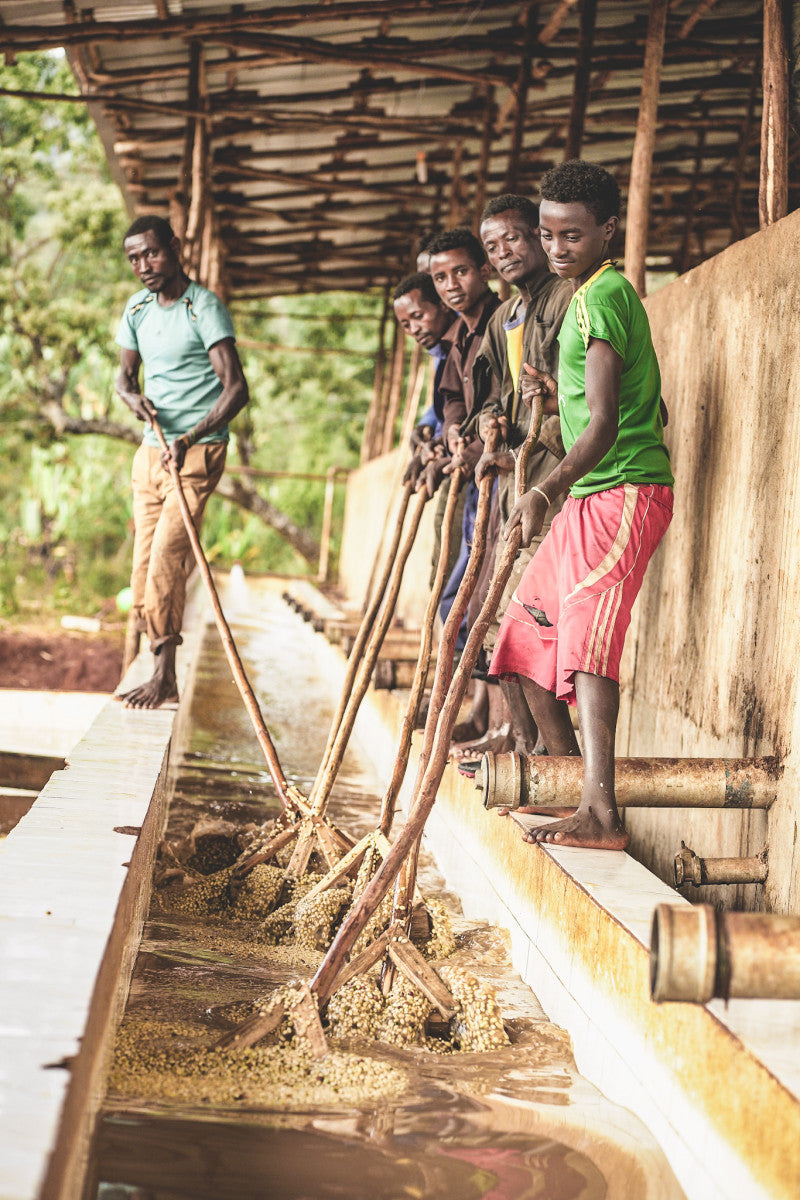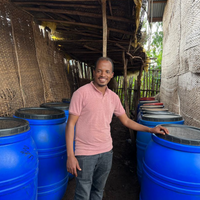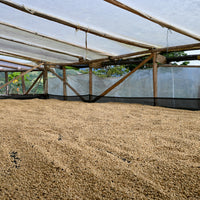Origin : Ethiopia
Region: Chelbesa, Gedeb, Yirgacheffe
Altitude: 1900-2400 meters above sea level
Variety: Heirloom
Process: Natural
Tasting Notes: Sweet and syrupy with notes of apricot jam, cola and blackberry.
This coffee comes from the Chelbesa Washing Station in Yirgacheffe. Chelbesa is one of the largest “Kebeles” or towns in Gedeb. This washing station receives coffee from nearly 500 farmers in the region.
Coffees in Ethiopia are typically grown on very small plots of land by farmers who also grow other crops. The majority of smallholders will deliver their coffee in cherry to a nearby washing station or central processing unit, where their coffee will be sorted, weighed, and paid for or given a receipt. Coffee is then processed, usually washed or natural, by the washing station and dried on raised beds.
The washing stations serve as many as several hundred to sometimes a thousand or more producers, who deliver cherry throughout the harvest season: The blending of these cherries into day lots makes it virtually impossible under normal circumstances to know precisely whose coffee winds up in which bags on what day, making traceability to the producer difficult. We do, however, make every available effort to source coffee from the same washing stations every year, through our export partners and their connections with mills and washing stations.
Typically farmers in this region don't have access to and therefore do not utilize fertilizers or pesticides in the production of coffee.
Natural coffees are typically delivered the day they are harvested, and are first sorted for ripeness and quality before being rinsed clean of dirt. Then they are spread on raised drying beds or tables, where they will be rotated constantly throughout the course of drying. Drying can take an average of 8–25 days, depending on the weather.
Yirgacheffe has become famous for coffees that tastes like blueberries. This region is plentiful. The thick vegetation is a product of the warm tropical climate with moderate wet and dry seasons. Most coffee is shade-grown by small producers using organic practices. Coffees are cultivated from 1600 to 2400 masl in these highlands. The multitude of microregions creates complex profiles depending on the washing station a particular coffee is from.






